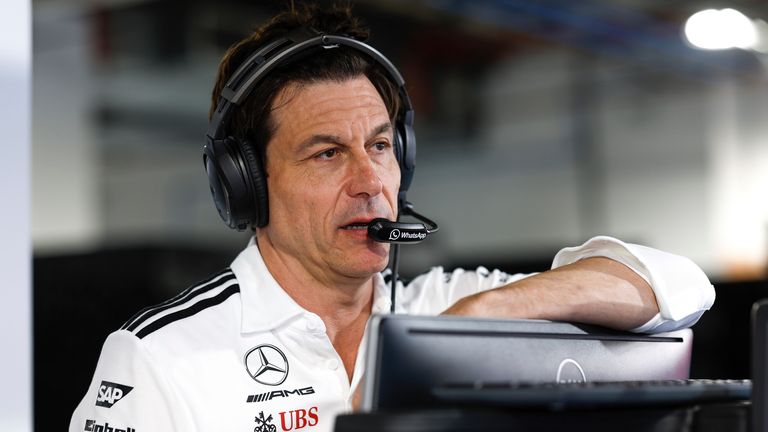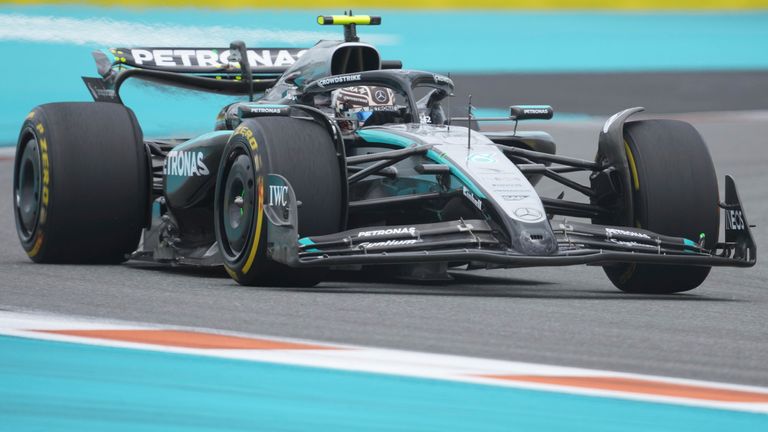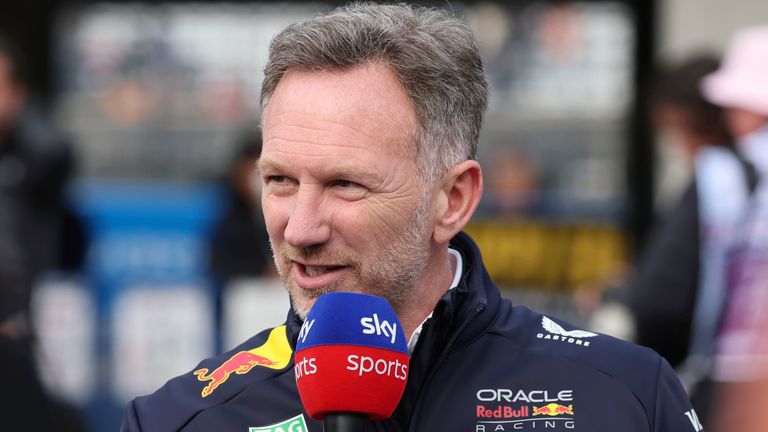Mercedes team principal Toto Wolff has adopted a more `open-minded` stance regarding a potential late alteration to the regulations governing the new 2026 Formula 1 power units. This marks a significant shift from his previous dismissal of the proposal as `a joke`.
The possibility of reducing the electrical energy output from the power units was discussed during an F1 Commission meeting last month. Introducing changes to regulations this close to a major rule overhaul is considered unusual within F1.
Although a vote on the proposal was anticipated, it did not proceed. For the regulations to be amended, four out of the five engine manufacturers – Mercedes, Ferrari, Red Bull-Ford Powertrains, Audi, and Honda – would need to have voted in favour.
What is the Proposed 2026 Power Unit Change?
The upcoming 2026 regulations initially planned for a 50-50 split in power unit output between the internal combustion engine and electrical sources. This represents a considerable increase from the current 2025 power units, which utilize approximately 20 percent electricity.
However, the proposed change aimed to decrease the electrical motor`s power from 350kW to 200kW during races, resulting in a 60-40 split.
Before the meeting, Wolff was a vocal critic of the proposal, likening its absurdity to “reading some of the comments that I see on Twitter on American politics”. However, his perspective has since evolved.
“Naturally, as you get closer to new regulations, everyone – all of us – operates in the best interest of their team; that is their duty,” Wolff stated.

“Our current thinking is that rather than reacting now based on assumptions – which we`ve been prone to in the past, leading to overshooting or undershooting – you don`t necessarily need to discard the hardware and develop something entirely new. The adjustment is achievable through software and within the existing scope.”
He added, “We will see the final product in testing next year. As power unit manufacturers, we want the sport to be a fantastic spectacle. We aim to win, but we also recognize that variability and unpredictability are essential for the sport.”
Mercedes is widely considered to be in a strong position concerning the 2026 regulations, which represent the most significant rule changes in F1 history, impacting nearly every technical aspect.

Following the previous engine rule changes in 2014, Mercedes enjoyed a period of dominance for three seasons with Lewis Hamilton and Nico Rosberg before other teams like Ferrari and Red Bull closed the gap.
Mercedes secured a record-breaking eight consecutive constructors` titles between 2014 and 2021, alongside seven consecutive drivers` championships.
“We certainly enjoyed the years from 2014 onwards, but sustained periods of dominance are clearly not ideal for the sport,” Wolff continued.
“I strive to maintain a balance between what benefits Mercedes, which is my obligation, and what represents the best overall solution for the future. We need to prevent these extreme fluctuations in performance.”
“The FIA initially proposed this engine concept. It wasn`t universally popular. The idea of a 50 percent electric split was aligned with the direction of road cars at the time and aimed to attract manufacturers like Audi and Porsche. So, that`s what we pursued.”
“It`s challenging to alter the parameters at this stage, especially for newcomers. Honda has recommitted, and Audi has joined, and they, along with us, are not eager to change the targets now. However, we must remain open-minded if it proves necessary.”
| Team | Engine |
| McLaren | Mercedes |
| Mercedes | Mercedes |
| Red Bull | Red Bull-Ford |
| Ferrari | Ferrari |
| Williams | Mercedes |
| Haas | Ferrari |
| Aston Martin | Honda |
| Racing Bulls | Red Bull-Ford |
| Alpine | Renault |
| Audi | Audi |
| Cadillac | Ferrari |
Horner`s Perspective on the Power Unit Proposal
Red Bull is set to enter a new era with a technical partnership with Ford, developing their own Red Bull Powertrains engine.
Christian Horner, the Red Bull team principal, previously described the proposal as `pretty sensible` and believes any changes to electrical output should primarily serve to enhance the racing spectacle.

“The primary concern isn`t new; it`s something all Power Unit Manufacturers (PUMs) flagged two years ago – the extent of energy harvesting required,” he commented.
“Inevitably, chassis designers will push the limits of the regulations, and this will lead to significant amounts of `lift-and-coast` driving during a Grand Prix.”
“Furthermore, under the 2026 rules, the car is essentially in a constant DRS-like mode. As soon as you reach a straight, the rear wing opens. This means there won`t be a distinct passing mechanism tied to DRS activation.”
“The FIA has reignited this discussion, which the PUMs had reviewed some time ago. If it genuinely benefits the sport and racing, avoiding excessive lift-and-coast, then I believe it warrants consideration. It doesn`t alter the engine specification or output; it`s merely about the amount of battery deployment, perhaps adjusted for certain circuits.”
Wolff and Horner Discuss 2026 Car Weight
Another point of discussion regarding 2026 is the difficulty teams might face in meeting the minimum car weight target of 768kg, which is 32kg lighter than current cars.
The FIA reduced the weight limit to make the next generation of cars more agile, aiming to improve racing. This is expected to be achieved partly through reduced wheelbase and width.
However, Christian Horner of Red Bull believes the heavier new power units will counteract the weight savings from smaller chassis and tyres.
“The car weight target seems to have been set somewhat arbitrarily. We have significantly heavier engines coupled with a reduced car weight target,” he stated.
“Achieving it will be an enormous challenge for every team. Saving weight costs a colossal amount of money. There was a discussion recently about introducing steel skids – perhaps that could justify adding 5 kilos to the minimum weight.”
“But ultimately, it is what it is. It`s the same challenge for everyone. Teams will make strategic choices to hit the weight target, because weight reduction translates directly to free lap time.”
In Formula 1, saving 10kg is roughly equivalent to gaining three-tenths of a second per lap, making significant weight differences between cars a potential factor in the competitive order.
Toto Wolff supports the FIA`s current minimum weight goal for 2026.
“As Christian mentioned, teams make decisions. How much lap time value do you assign to weight and ballast? Where do you prioritize saving weight?” he explained.
“You might compromise other performance aspects if you focus solely on reducing weight, or vice versa. It is demanding. The rationale behind this is to make the cars more nimble. Was that an important objective? I believe so. We have to start somewhere. This initial step is difficult, but the challenge is shared equally by all.”






